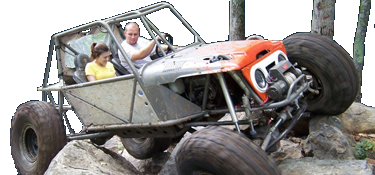Barnes 4wd
Well-Known Member
- Joined
- Aug 6, 2007
- Location
- Etowah NC
Is that from the center of the top bolt hole?
I really think for someone not familiar with what many of the functions are and what they effect a beginner could get it way out of tune and get horrible results. .
yes center of top holeIs that from the center of the top bolt hole?
Basic pulse is really on time vs. off time. Some newer syncro machines allow percentage adjustments of peak power and background current "off current", so a puddle remains somewhat fluid to prevent cold lap or poor consistent fusion.You'll be able to apply more or less amperage with the pulse running regardless, so yes you'll be able too feather the heat. With the dynasty a whole other can of worms can be opened with the fact you can now play with the hertz. This is actually the frequency of the output sine wave. Even DC has a little up and down sine wave, its really a cleaned up "dirty ac wave form". Better the machine better the characteristics. All standard American power is in 60 hertz, with the dynasty you can crank it or retard it. So instead of 60 cycles of a sine wave you can get an ear buzzing 120 if you want. Literally freezing the puddle shape, growth or penetration by further manipulating the percent of cleaning, background, slope, or peak currents. It's so variable I remember reading about a company replacing everything they own because they needed to weld the thin stainless found on appliances. Applications where they still needed an operator rather than a automated unit. They are so tunable I personally have only scratched the surface, but having one in my shop is going to allow me to play at will.haha funny you say that because, when I was around them I was going through school, and probably didn't know shit from apple butter.
Good read.... On the Syncro, do you think that when the pulse quality starts to fade, I'll be able to gradually compensate for it with my foot as it gets hotter. I've never even used a pulse setting before. I guess because I've never worked in production style shop. Looking forward to seeing what it is capable of.
 In that spare time I'm going to find.........
In that spare time I'm going to find.........I'm a fan a Dynasty, no way around that. Everything it offers is efficient and mobile. With it being digital and only having buttons to work with, I disagree on the tuning aspect. You can hit a button on a Dynasty to get a tune, but this thing seems to be further tunable because it has tunable settings.
Basic pulse is really on time vs. off time. Some newer syncro machines allow percentage adjustments of peak power and background current "off current", so a puddle remains somewhat fluid to prevent cold lap or poor consistent fusion.You'll be able to apply more or less amperage with the pulse running regardless, so yes you'll be able too feather the heat. With the dynasty a whole other can of worms can be opened with the fact you can now play with the hertz. This is actually the frequency of the output sine wave. Even DC has a little up and down sine wave, its really a cleaned up "dirty ac wave form". Better the machine better the characteristics. All standard American power is in 60 hertz, with the dynasty you can crank it or retard it. So instead of 60 cycles of a sine wave you can get an ear buzzing 120 if you want. Literally freezing the puddle shape, growth or penetration by further manipulating the percent of cleaning, background, slope, or peak currents. It's so variable I remember reading about a company replacing everything they own because they needed to weld the thin stainless found on appliances. Applications where they still needed an operator rather than a automated unit. They are so tunable I personally have only scratched the surface, but having one in my shop is going to allow me to play at will.In that spare time I'm going to find.........

.In that spare time I'm going to find.........
If I have a background variable, a pulse variable and an on time variable, wouldn't that mean that the Hertz variable on the bottom of the machine finishes it off?
No. The high frequency on the bottom is basically out of the loop once the arc is established. I think it remains in the background on ac so the arc doesn't snuff out when you pass through zero. The pulse varies the overall current, changing the amplitude of the wave at a set pattern within a range. You can do the same with your foot, just not as quickly or accurately. The balance just changes the time it spends positive vs negative. These are all just ways to manipulate the 60hz that's coming out of the machine. The frequency that does the work is always based off the incoming line frequency. Inverters are able to do more with frequency because they first rectify it to a high voltage dc. After that, the circuitry can do pretty much whatever it wants with it as far as frequency and shaping is concerned.
Sent from my XT907 using Tapatalk
what about if I switch the high frequency to continuous mode


